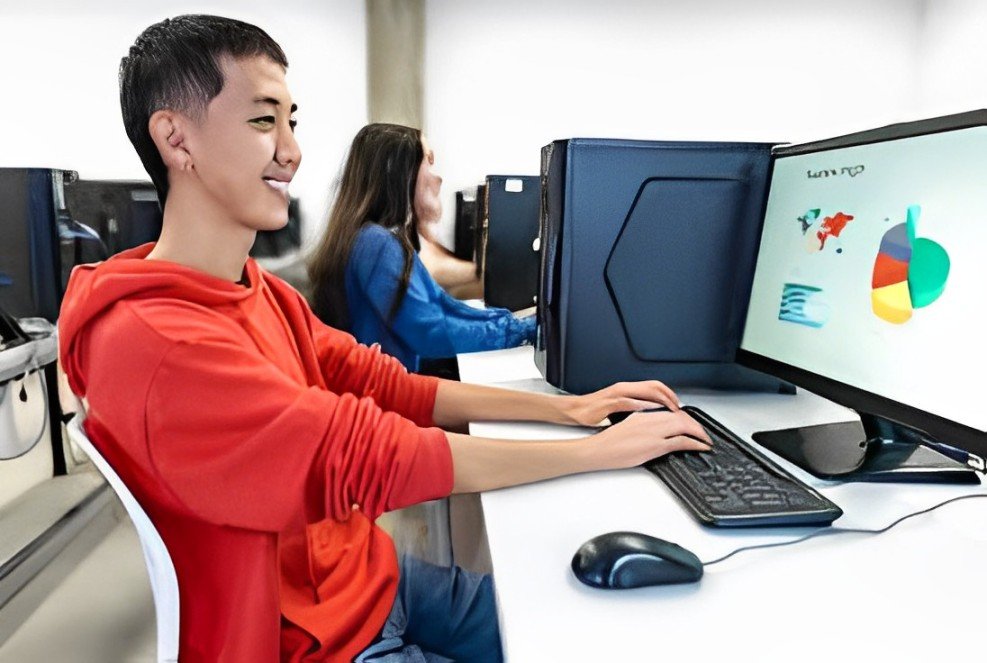What is One Negative Effect Technology Has Had on Education? The Distraction Dilemma

Table of Contents
- Introduction
- Understanding the Role of Technology in Education
- The Distraction Dilemma: What is One Negative Effect Technology Has Had on Education?
- 3.1 The Impact of Smartphones
- 3.2 Social Media and Learning Disruption
- 3.3 The Role of Gamification
- The Psychological Effects of Distraction
- Academic Performance and Technology Distractions
- Strategies to Mitigate Distractions in Educational Settings
- Conclusion
Introduction
(what is one negative effect technology has had on education?)In the digital age, technology has become a cornerstone of education, reshaping how students learn and educators teach. From online learning platforms to interactive educational apps, the benefits are numerous. However, amidst these advancements lies a pressing concern: what is one negative effect technology has had on education? This question uncovers a significant issue—the distraction dilemma.
As students navigate a world filled with notifications, social media feeds, and instant messaging, the potential for distraction is ever-present. This article delves deep into how technology, while transformative, has introduced distractions that can impede academic success and overall learning experiences.
Understanding the Role of Technology in Education
Technology has revolutionized education in various ways, including:
- Access to Information: Students can now access a wealth of information at their fingertips, enhancing research and learning opportunities.
- Online Learning: With the rise of platforms like Coursera and Khan Academy, education has become more accessible than ever, breaking geographical barriers.
- Collaborative Tools: Tools like Google Docs and Zoom facilitate collaboration among students and teachers, making learning a more interactive experience.
However, as we embrace these advancements, it’s crucial to recognize the darker side of technology’s influence on education.
The Distraction Dilemma: What is One Negative Effect Technology Has Had on Education?
3.1 The Impact of Smartphones
Smartphones have revolutionized communication and access to information, but they have also become a double-edged sword in educational environments. With their constant notifications and easy access to social media, smartphones can divert students’ attention away from their studies.
Attention Fragmentation
Research indicates that multitasking can lead to reduced focus and cognitive overload. When students are constantly checking their phones for messages or updates, their attention is fragmented, making it challenging to engage deeply with educational material.
Classroom Disruptions
The presence of smartphones in classrooms can lead to disruptions, not just for the students using them but also for their peers. Notifications, ringtones, and visual distractions can disrupt the learning environment, making it harder for everyone to concentrate.
3.2 Social Media and Learning Disruption
Social media platforms like Facebook, Instagram, and TikTok are designed to be engaging and addictive. For students, these platforms can become significant distractions that detract from their focus on education.
The Allure of Instant Gratification
Social media offers immediate rewards—likes, comments, and shares—which can be more enticing than academic tasks. This craving for instant gratification can lead students to prioritize social media over their studies, affecting their commitment to learning.
FOMO (Fear of Missing Out)
The fear of missing out on social interactions can compel students to stay connected to their devices, even during class or study time. This behavior not only hampers their ability to absorb information but can also lead to increased anxiety and stress.
3.3 The Role of Gamification
Gamification in education—using game-like elements to motivate students—can enhance engagement but also has potential downsides. While it can make learning fun, it can also create distractions that undermine academic focus.
Overemphasis on Rewards
When learning becomes overly gamified, students might focus more on earning rewards than on mastering content. This shift can diminish the intrinsic motivation to learn, leading to superficial understanding rather than deep knowledge.
Competition Over Collaboration
Gamified environments often foster competition among students. While healthy competition can be motivating, it can also lead to stress and anxiety, distracting from the collaborative learning experiences that are essential for skill development.
The Psychological Effects of Distraction
Distractions can have profound psychological effects on students. Constant interruptions can lead to:
- Increased Anxiety: The pressure to stay connected and respond quickly can heighten anxiety levels, making it difficult for students to focus.
- Lowered Self-Esteem: Struggling to concentrate due to distractions can result in poorer academic performance, which can negatively impact a student’s self-esteem.
- Procrastination: The lure of distractions can lead to procrastination, where students delay their studies in favor of more enjoyable activities, ultimately affecting their academic outcomes.
Academic Performance and Technology Distractions
The correlation between technology-induced distractions and academic performance is concerning. Studies have shown that students who frequently check their phones or engage with social media during study sessions tend to have lower grades compared to their more focused peers.
The Evidence
- Diminished Retention Rates: Research indicates that students who multitask with technology have lower retention rates for the information they learn. This is particularly evident in subjects that require deep understanding and critical thinking.
- Test Scores and Attention: Standardized tests have shown that students with higher levels of distraction often score lower than their peers. This pattern suggests a clear link between attention management and academic success.
- Long-Term Implications: The effects of distractions extend beyond immediate academic performance. Students who struggle to focus may develop poor study habits that can follow them into higher education and their professional lives.
Strategies to Mitigate Distractions in Educational Settings
While technology presents challenges, educators and students can implement strategies to mitigate distractions:
6.1 Creating a Technology Policy
Establishing clear guidelines regarding technology use in classrooms can help minimize distractions. Policies might include:
- Device-Free Zones: Designating certain areas or times for device-free learning can encourage deeper engagement.
- Scheduled Breaks: Allowing designated times for social media and phone use can help students manage their cravings for distraction without entirely removing technology.
6.2 Encouraging Mindfulness
Integrating mindfulness practices into the educational experience can enhance students’ focus and reduce anxiety:
- Mindfulness Training: Incorporating mindfulness exercises into the school day can help students develop better concentration skills.
- Breathing Techniques: Teaching students simple breathing techniques can aid in managing stress and improving attention.
6.3 Fostering a Supportive Environment
Creating a supportive classroom environment encourages students to share their struggles with distraction and seek help:
- Open Communication: Encouraging students to discuss their challenges with distractions can foster a sense of community and understanding.
- Peer Support Systems: Establishing peer study groups can help students stay accountable and focused.
Conclusion
As we navigate the complexities of education in the digital age, it’s crucial to address the negative effects technology has had on learning. What is one negative effect technology has had on education? The distraction dilemma serves as a reminder that while technology can enhance education, it can also impede focus and engagement.
By recognizing these challenges and implementing effective strategies, educators and students can create a more balanced approach to technology use in education. Ultimately, fostering an environment that prioritizes focus will lead to richer learning experiences and improved academic outcomes.
you may also read multiblogs.





